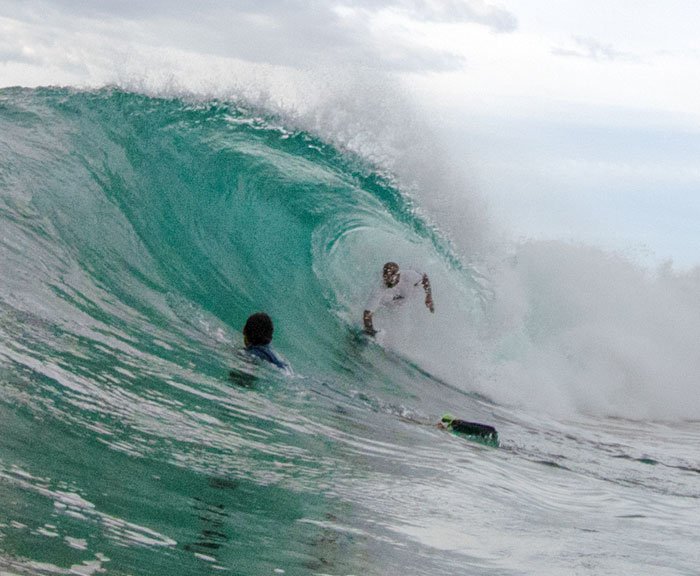How to Body Surf Like A Pro
7th Jan 2024
How to Body Surf (With or Without a Body Surfing Handboard and Swim Fins)
The art of body surfing is the purest form of communication with the ocean waves. It’s also one of the most enjoyable activities you can do while you are at the beach.
When you body surf, you are hydroplaning or skimming across the face of a wave using your body. In more advanced wave conditions, swim fins and bodysurfing handboards are eventual.
The experienced body surfer positions their body like they are performing a one-handed push-up and the handboard ( also know as a handplane) and swim fins are the only elements gliding across the wave. The handboard can be used to speed up or slow down, to get tubbed (when you are riding the inside or hollow part of the barrelling wave) or even to cut into the wall of the wave to exit, or piercing upwards through the wave to the surface
Step 1 - Preparing to Body Surf
Before you begin, it is good to prepare with warm-up stretches as you would do for bodyboarding and or surfing. While you are warming up, keep an eye on the surf conditions to find the best sandbank, break and to be aware of rips (more information below).
The only equipment you need for freestyle body surfing is swim fins. If you want more lift, speed and control you can use handboards as well.
Step 2 - Picking the Right Wave to Body Surf
The first step in learning how to body surf is learning to spot the ideal beach or reef break for body surfing. You can freestyle body surf almost any wave in the world that has slower, breaking waves.
For faster waves, it is best to bodysurf with swim fins or flippers and a handboard. Look for gentle sloping sandbanks that allow you to swim out to the breaking waves. You will want to body surf in waves that pitch and break left and right, instead of closing out all at once.
Beginners should stick to smaller waves in the 1 to 3 ft range and avoid waves that crash too close to shore or shallow sandbanks.
The best place to be is between the flags, that being said as long as you are not using a handboard for the respect and safety of other also swimming between the flags.
Many local council beaches safely policies don't allow hard material/s boards between the flags to prevent injury.
More experienced body surfers can ride in much bigger wave conditions whether it’s a beach break or reef break.
Once you have achieve these better bodysurfing techniques, your next goal is to ride the wall of the wave as long as possible and with even more skill experience ride the wave right through a tube and make it to other side.
Step 3 - Body Surfing Techniques
Chest-deep water you can push off the ocean floor and once you feel the force of the wave starting to carry you place your hand/s in front of the wave and skim across the wave either on your chest or side of your body.
Once you’ve achieved the basic bodysurfing technique, you can progress to mastering bigger waves and naturally performing new bodysurfing manoeuvrers on the wave.
Experienced body surfers can position their handboard and body to aquaplane across the wave, gliding diagonally left or right across the face of a wave as it barrels over the body surfer.

In deeper ocean conditions where the waves are breaking further out, and you are not a strong swimmer you will need swim fins to gain more speed to catch the waves. In this case, a handboard can also assist in a stronger swimming stroke, and it will also help you to return through the wave zone faster and more efficiently.
One great technique is the dolphin style, whereby the wave has just gone over, and you push off the ocean sandbank and thrust together with both swim fins to pierce through the wall of the wave and then ride the wave left or right.
Final Words from the POD Team
Another favourite technique, other than using your hand or a handboard to cut into the wall of the wave to exit into deeper water.
At the end of the wave, use your speed to lift your body up and over the lip of the wave to exit.
Experienced bodysurfers can even bend both legs up behind their back and finish the wave with a nice 360 degrees spin on their stomach, similar to a bodyboarder doing exactly the same on their bodyboard.
Suggested Reading: Bodysurfing With A POD Handboard

